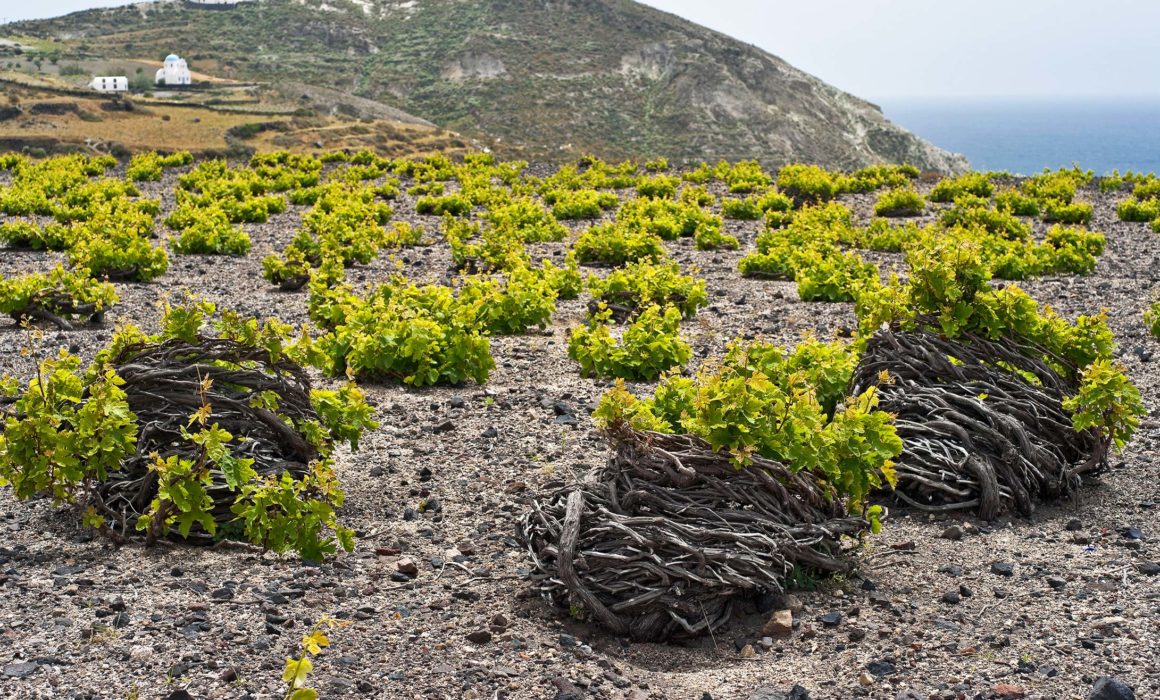Santorini is a Greek wine region located on the archipelago of Santorini in the southern Cyclades islands of Greece.
Wine has been produced here since ancient times, but it was during the Middle Ages that the wine of Santorini became famous worldwide under the influence of the Republic of Venice. Santorini also produces blended and rosé wine made from white grapes such as Athiri, Aidini and Assyrtiko and red grapes such as Mandelaria.
Wine was made on the island in Greek and Roman times, but the region became particularly noteworthy in the Middle Age when Crusaders took control of the island from the Byzantine empire. One of the crusaders was a Venetian nobleman whose family maintained control of the island until 1336.
Under the Venetian influence, with this extensive trade network and maritime control, Santorini wines were widely exported throughout the Mediterranean and Europe. The wine was particularly prized for its ability to withstand the month – long sea – voyages thanks to, in part, its sweetness and high alcohol levels. So highly valued was Santorini wines during this period that when the Ottoman Turks conquered the region in 1579, they still permitted the uninterrupted trade of the wine (despite their religion forbidding any kind of alcohol ).
When the Russian Orthodox Church adopted Santorini wine as the official Eucharistic wine of the church, the Ottomans allowed the island producers to trade freely with Russia even during the frequent wars between the two empires.
Santorini vines are kept protected and trained low to the ground in a basket shape that helps the grapes not to be damaged from the fierce winds and heat of the island…and to absorb the humidity of the night.
Located in the Aegean Sea, Santorini has a distinctly Mediterranean climate that is characterized by warm temperatures, low rainfall but high humidity during the growing season. The area is subjected to strong winds coming off the oceans. The vineyard soils of the region are very poor, composed of volcanic ash and rocks. The calcareous subsoils are porous which helps to retain some of the humidity in the air and release it as moisture in the night for the vines to utilize.
Santorini is immune to phyloxera, dangerous illness that violently hit grapes all over Europe in the 18th/19th century and destroyed most of European grapes, as its volcanic soils contain none of the clay that is necessary for parasite to survive. As a result, many of the roots found on the vines on Santorini are centuries old. The grape growers of Santorini use a unique bush-training system, known as koulara, to grow the grapes. As the vines grow, they are woven into baskets with the grapes facing toward the inside of the ring. The vine’s leaves and vine provide protection for the grapes from harsh winds and sunlight. The koulara are often grown haphazardly on small plots of land and can be mistaken for wild bushes by unknowing passers-by. Grape varieties are frequently grown together and the growers are often unaware which grapes are which until harvest which takes place in mid-August.
At the age of 75 a vine is generally woven into many layers and it may be unable to provide proper nutrients and high enough yields to keep in production. As a result, it is clipped at its roots and a new vine is connected to the rootstock. It is important to keep the roots healthy and in use as their old age has allowed them to grow deep into the calcareous soils, extracting any moisture that may be available.

